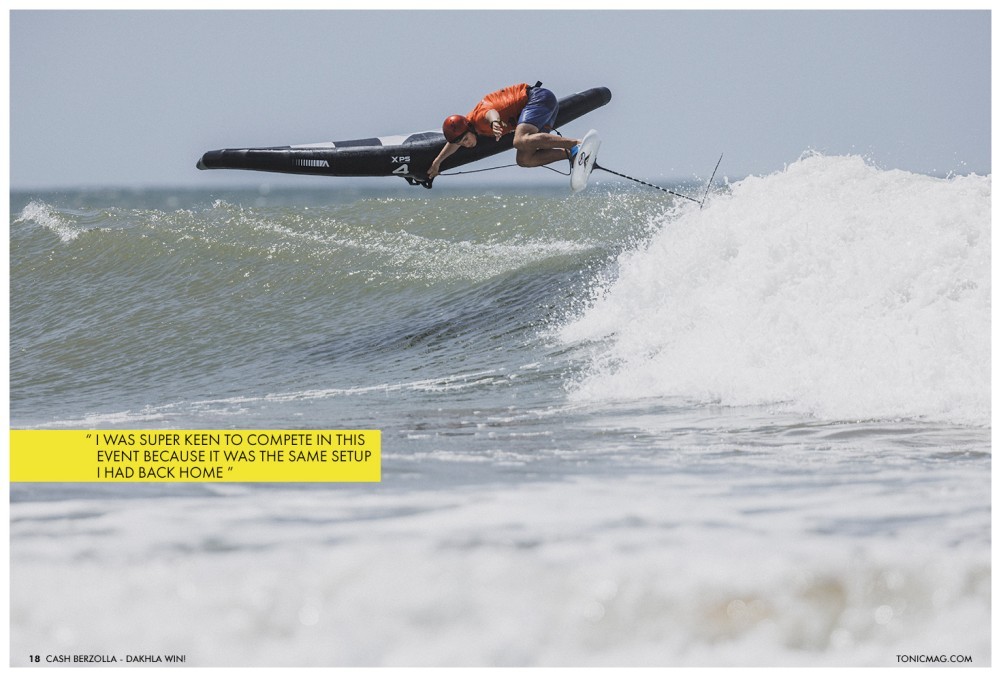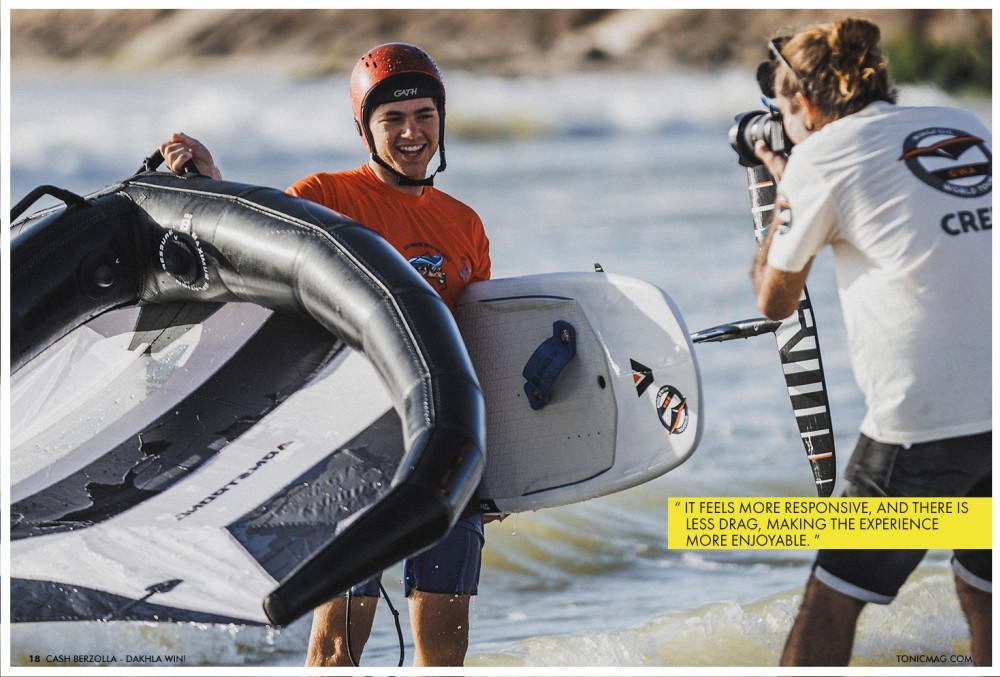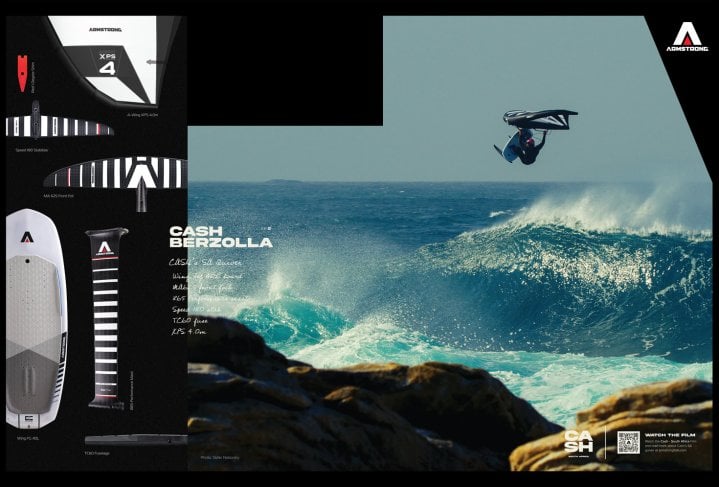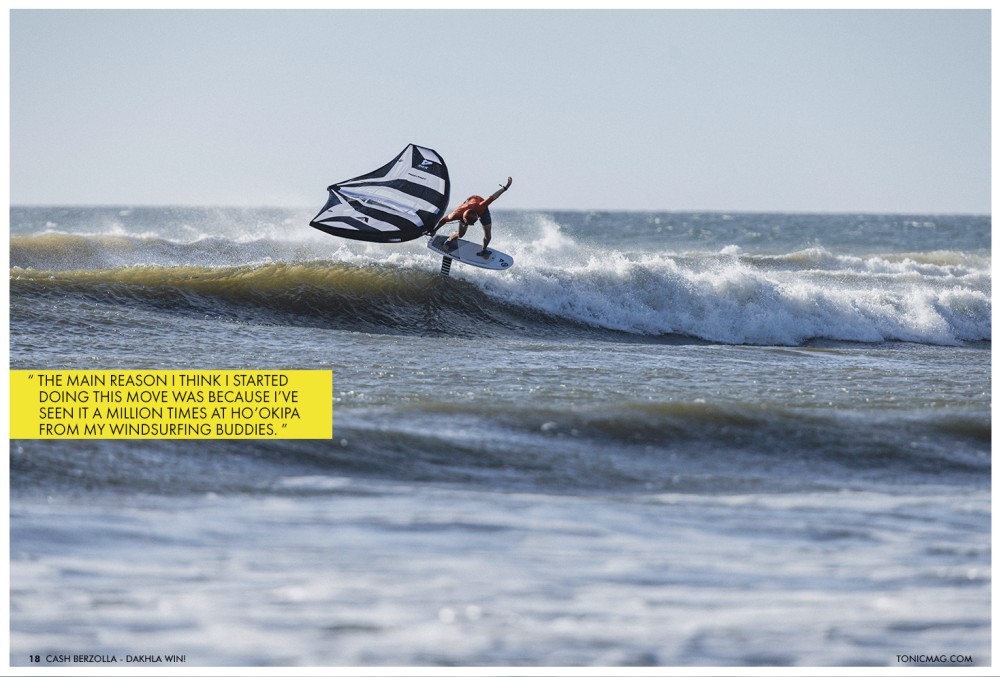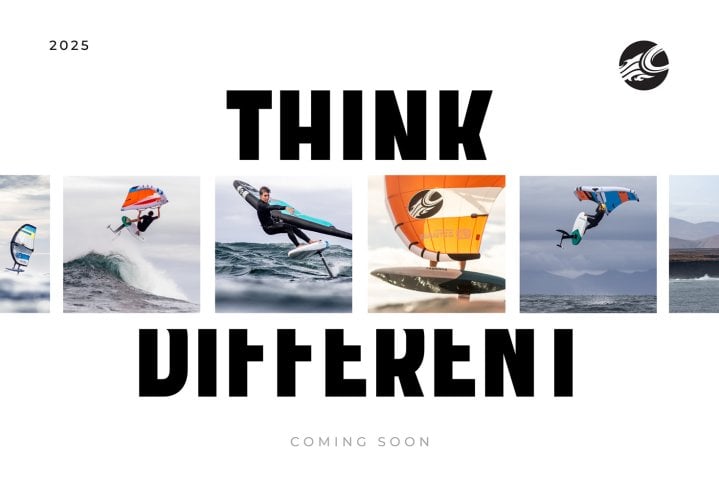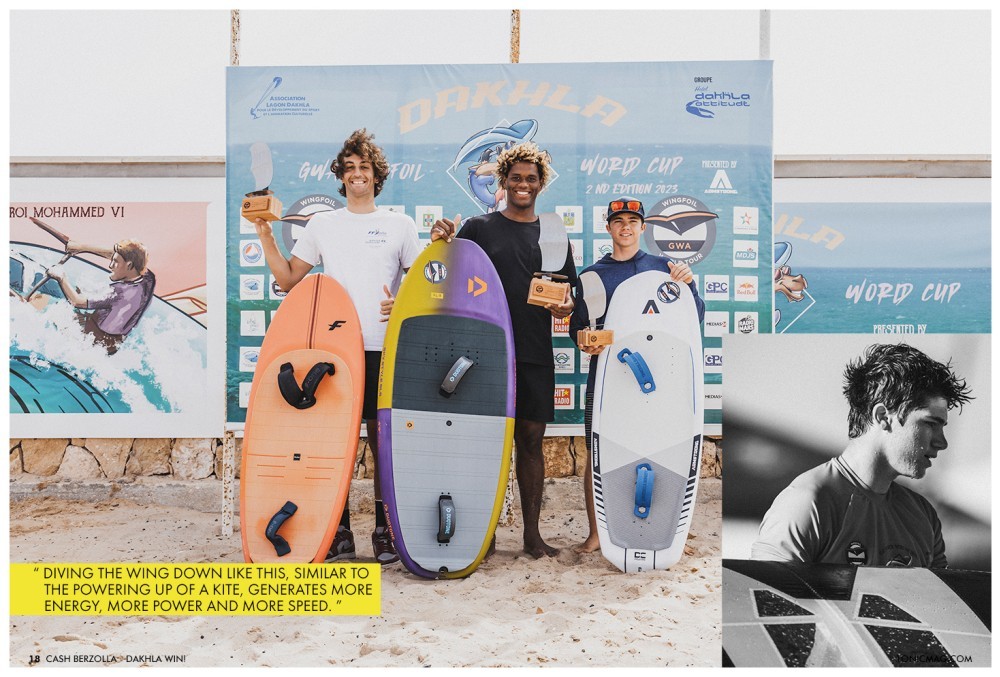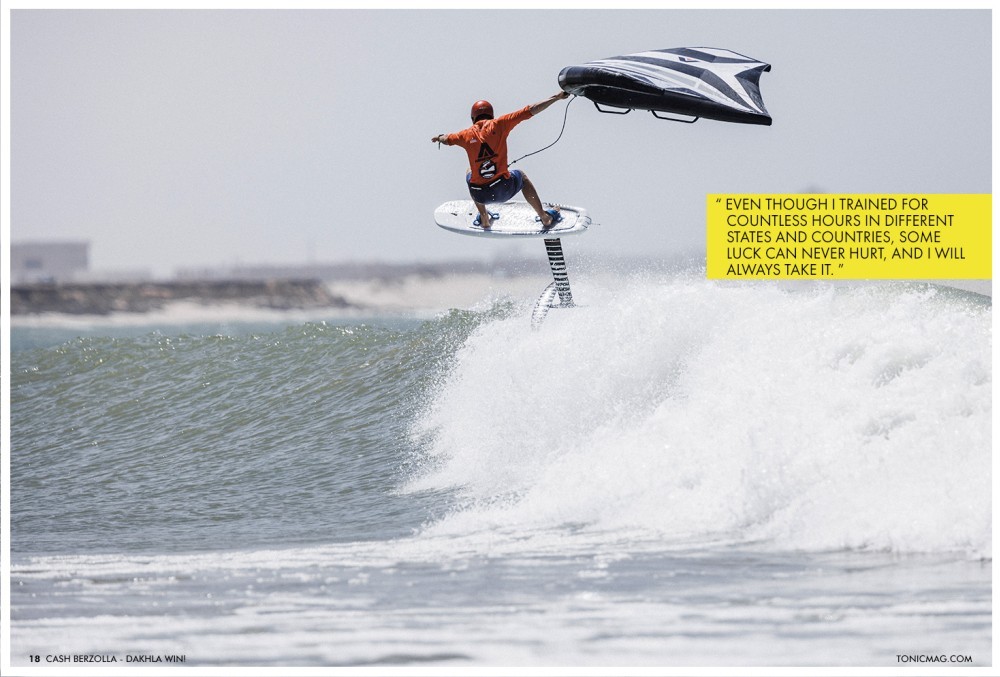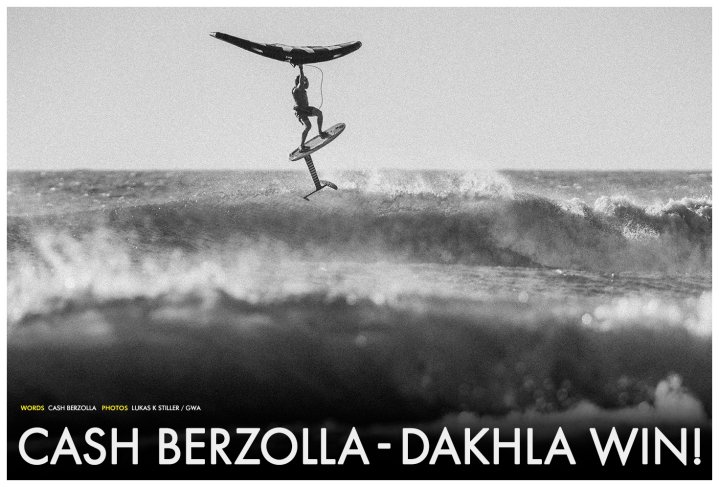
Cash Berzolla Dakhla Win
Issue 18 / Tue 21st Nov, 2023
You’ve undoubtedly heard of Cash Berzolla, and chances are you wouldn’t forget a name like that! In this feature, Cash takes us through his journey from training in Maui and Hood River to boarding a flight to Morocco to participate in the final GWA wave stop of the season. Despite a rocky start with missing gear and seaweed-filled waters, Cash turned the tide in his favour and landed top spot on the podium, and we’ve got all the exciting details right here!
I never thought I’d be lucky enough to visit, let alone ride a foil in Morocco. However, once I saw the schedule for the GWA and that the last wave event would be held in Dakhla, I got very excited. After watching the first wave event from the GWA in Cape Verde, I knew I had to try it out!
Rio was my first wave event with the GWA, and I had a great competition. I placed second and loved the format of the surf-orientated style. Coming from a surf background, I found a lot of similarities between the two. After Rio, I switched my focus to Dakhla; I was super keen to compete in this event because it was the same setup I had back home, a right-hander with wind blowing down the line. Once home from Rio, the waves were flat. Summertime on Maui is fantastic, but the north shore has little to offer regarding waves. The best training I got for the two weeks I was back was doing downwinders and playing with the rolling swells that marched down the coast.
Before I knew it, I was off, headed to Hood River, Oregon, for the AWSI trade show. Hood River was amazing, but it didn't have the waves I needed to train for the competition. I took what I could get, still practising on rolling swells and dialling in my gear. I spent a week or so in Oregon and then on a few flights to Morocco. Except there was one problem: when I arrived in Morocco, I soon realised the gear I needed to compete hadn’t come. However, I was fortunate my teammate Aidan Nicholas had his gear, and I could use that. I used Aidan's gear for the first round, which wasn’t a big deal, and soon after, I got mine.
For this competition, I rode the new 4’4” 40L Wing FG board from Armstrong Foils with a 795 Performance mast, 60cm fuselage, MA800 front foil and a 180 Speed stabiliser with a 1-degree shim. For me, riding a board with fewer litres is normal, and I find it great in the waves. It feels more responsive, and there is less drag, making the experience more enjoyable.
The conditions for this wave contest were great. We had wind the whole time, and we even got some pretty decent swell. When we first got there, it was a very challenging spot to learn; this was due to the amount of seaweed floating in the water. Every few feet or so, you would snag some seaweed, and your whole setup would slow down, forcing the nose of your board towards the water, making it nearly impossible to ride with speed, power and flow.
Lucky for us, as the competition started, the seaweed dissipated, and we found ourselves at a dreamy right-hand point break in the middle of the Western Sahara. This wave was nothing like I had winged before; with such a long distance to ride after each completed ride, you felt it in the legs. The tide changes were dramatic as well. High tide wasn't much of a problem, but at low tide, rocks were exposed, and it was very sketchy to come back and rebound into the white water.
We made do, and I tried to bring my flair to each of my heats. A big part of what I love to do in the waves is the laydown jibe. The laydown jibe is when you go with your back to the wind, and instead of doing a regular jibe (passing the wing above your head), you turn downwind, sheet in with your back hand and push your front hand to the water. There are many ways to come out of this manoeuvre. One is you backwind slightly with the wing upwind of you and continue into a three-sixty, ending up the way you went into it, or you backwind slightly and push the wing above your head and start heading out the way you would with a regular jibe.
However, doing a laydown jibe on a wave is a bit different; the beginning is the same by lowering it to the water, but as you come up to the section, you move the wing to flip back over, allowing power back into the sail. The main reason I think I started doing this move was because I’ve seen it a million times at Ho’okipa from my windsurfing buddies. Whether a big bottom turn or a small little one, any windsurfer trying to hit a section lowers the sail, generating power into the next manoeuvre.
As I began to try this manoeuvre and copy the windsurfers, I realised that lowering the wing down to the water just like the sail of a windsurfer opened up more to see. This changed everything. Now, I could see the upcoming section and see what the wave was planning to do. Diving the wing down like this, similar to the powering up of a kite, generates more energy, more power and more speed. Doing laydown jibes like this allowed me to see where I was going, hit sections at the right time, generate more speed, make it around sections, and even slide on the bottom of my foil.
Incorporating the laydown jibe into my skill set made riding waves more interesting, higher paced, and more fun. The jibe doesn’t come with a high level of difficulty; you can make it as easy or as hard as you would like. If you want to drop in on a ten-foot wave and do a massive laydown bottom turn with tons of speed, go do it; if you want to wing one-foot mush and diversify your riding, have a crack at it. Having fun on the water has always been what's driven me in any ocean sport; adding things like the laydown jibe is one that has gotten me excited to get in the water day after day.
Overall, this event was amazing. While we didn’t get to ride any camels, which was a bit of a bummer, we scored some pretty awesome right-hand point breaks. Sharing the lineup with many amazing wingers and kiters made each session unique. I feel fortunate to have been able to travel to and compete in Dakhla, win and place third in the world.
I definitely got lucky with the win here by only 0.2 points, but I will never admit that my whole performance came down to luck because I trained hard for this event, and I can't take that away from myself. However, even though I trained for countless hours in different states and countries, some luck can never hurt, and I will always take it.
A massive shoutout to Malo Guenole and the other competitors for giving me a run for my money and keeping me on my toes throughout the event. Big Mahalo to the GWA, Armstrong Foils and the Westpoint Hotel for putting on this fantastic competition. Morocco was the trip of a lifetime!
Videos
By Cash Berzolla




